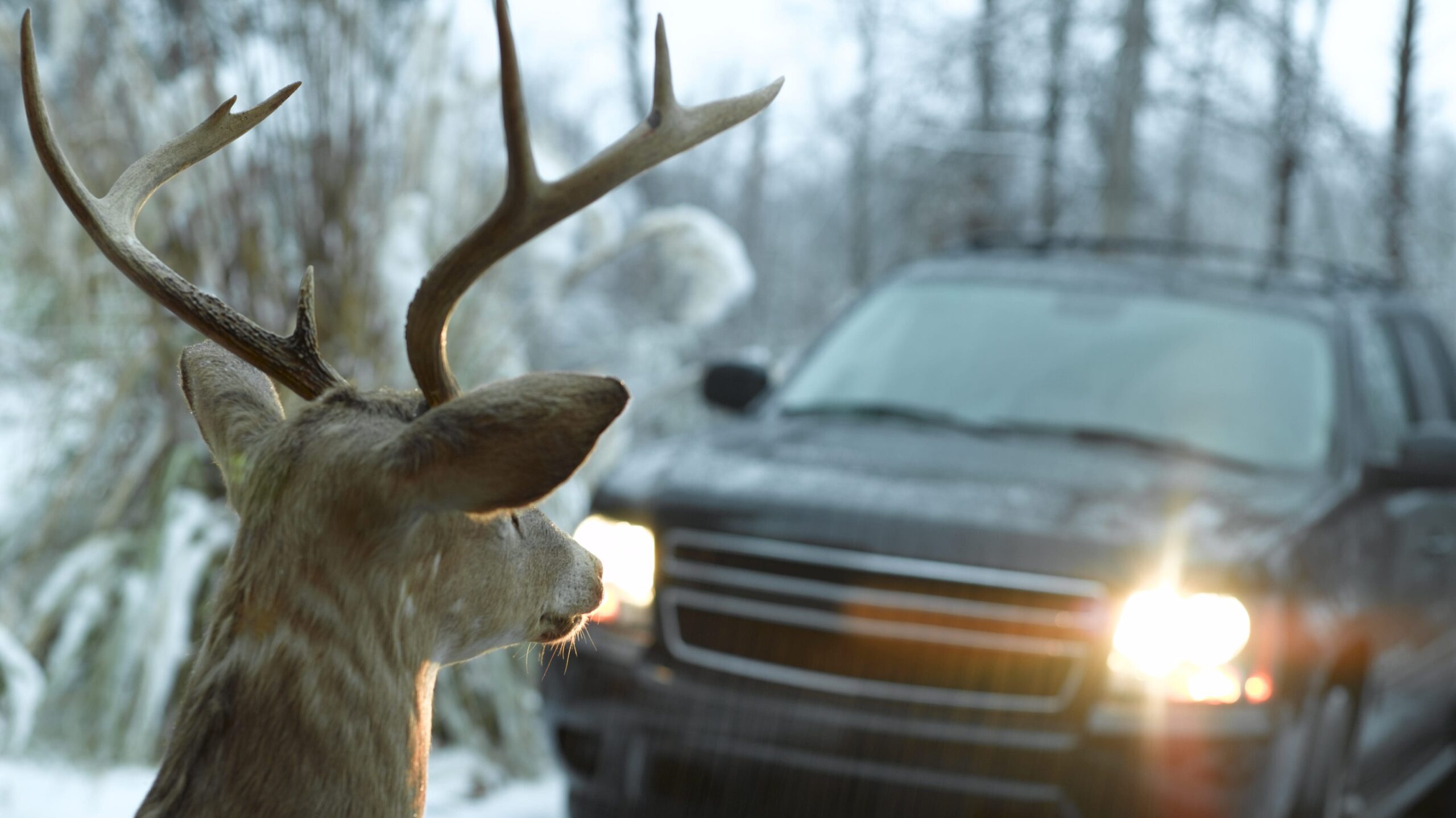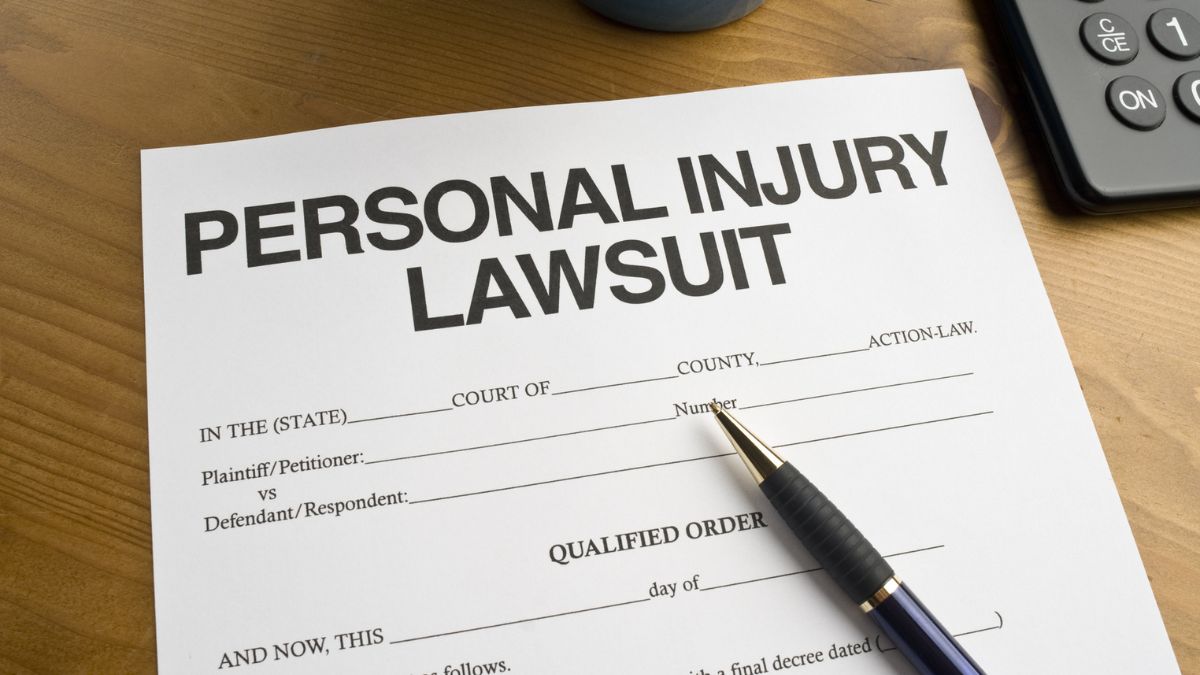TOPIC
5 Common Debt Traps and How to Avoid Them

Debt doesn’t happen overnight. It creeps in slowly with a small credit card balance, then a payday loan to cover an unexpected bill, followed by an overdraft fee or a rent-to-own purchase. Before you know it, you’re trapped in a cycle of payments, high interest rates, and financial stress.
Millions of people struggle with debt, not because they’re reckless spenders, but because they unknowingly fall into debt traps designed to keep them stuck. Credit card companies, payday lenders, and rent-to-own services often market their products as solutions to financial problems. In reality, they create bigger ones.
Understanding these debt traps is the first step to avoiding them. Knowing how to escape if you’re already caught is crucial for financial freedom. Let’s explore five common debt traps, their dangers, and how to break free.
Common Debt Traps and How to Avoid Them
Here are some of the most common debt traps and tips to avoid them:
1. Credit Card Debt
Credit cards are convenient, but they come with a hidden danger—high interest rates that challenge paying off balances. When you swipe your card without a plan, it’s easy to rack up more debt than you can afford.
Many people only pay the minimum amount due each month, believing they’re staying on top of their debt. However, minimum payments mostly go toward interest, barely reducing the principal balance. This means a $1,000 purchase could take years to pay off and cost double or triple the original amount.
Why It’s a Trap
Credit card companies benefit when you carry a balance. The longer you take to pay off debt, the more you earn in interest. That’s why they set low minimum payments—so you stay in debt longer.
How to Avoid It
- Pay more than the minimum—Always aim to pay off your monthly balance. If that’s not possible, make the most significant payment to reduce interest charges.
- Use cash or debit whenever possible – If you struggle with credit card spending, switch to cash or a debit card to avoid debt accumulation.
- Limit your cards – Having multiple credit cards increases your chances of overspending. Stick to one or two for essential expenses.
- Negotiate a lower interest rate – Many credit card companies are willing to lower your interest rate if you ask, especially if you have a good payment history.
Managing your credit card usage is a significant step in effective debt management. The less you rely on credit for everyday purchases, the more financial freedom you’ll have.
2. Payday Loans
A payday loan is a quick fix when you’re short on cash and facing an urgent expense. Lenders promise fast money with no credit check, but the reality is far from helpful. Payday loans are among the most dangerous financial products because of their astronomical interest rates and short repayment terms.
A typical payday loan charges an interest rate of 300% or more, meaning a $500 loan could cost you $1,000 or more to repay. Since most borrowers can’t afford to repay in full on their next payday, they roll the loan over—leading to an endless cycle of debt.
Why It’s a Trap
Payday lenders market their loans as “short-term solutions,” but they are designed to keep people borrowing repeatedly. Many payday loan users take out multiple loans to cover previous ones, digging deeper into financial hardship.
How to Avoid It
- Build an emergency fund – Even saving a small amount each paycheck can prevent the need for a payday loan.
- Seek assistance from local resources. Many nonprofit organizations offer financial, food, and utility assistance to those in crisis.
- Consider a personal loan instead – Credit unions and online lenders offer small personal loans with much lower interest rates.
- Negotiate bills with creditors. If you’re struggling, contact your creditors and ask for an extension or a hardship plan before taking out a payday loan.
Breaking free from payday loans requires discipline, but it’s possible with better financial planning and debt management strategies.
3. Car Title Loans
Car title loans allow you to borrow money using your car as collateral. While they provide quick cash, they come with significant risks. If you can’t repay the loan, the lender has the legal right to repossess your vehicle.
These loans often carry interest rates of 100% or more, making them nearly impossible to repay without rolling them over. The cycle continues, and many borrowers lose their only means of transportation.
Why It’s a Trap
Lenders know people need their vehicles to get to work, making them more likely to prioritize repaying the loan over other expenses. This keeps borrowers locked in a cycle of debt, constantly struggling to pay off an ever-growing balance.
How to Avoid It
- Avoid borrowing against essential assets – If losing your vehicle severely impacts your life, do not risk it for a short-term loan.
- Look for alternative funding. Before taking a title loan, Consider borrowing from family, selling unused items, or doing extra work.
- Explore lower-interest loan options – Credit unions, local banks, and online lenders may offer better terms with more manageable repayment options.
Title loans put your most valuable possessions at risk. Avoiding them is a key part of smart debt management.
4. Rent-to-Own Agreements
Rent-to-own stores advertise “affordable” payment plans for furniture, electronics, and appliances. While the payments seem low, the final cost is often two to three times the original price.
For example, a $600 couch could cost over $1,500 when payments are complete. If you miss a payment, you could lose the item and all the money you’ve already paid toward it.
Why It’s a Trap
Rent-to-own agreements target those with poor credit or limited cash, convincing them that this is their only option. These deals cost far more than saving up and purchasing outright.
How to Avoid It
- Save and buy in full – If you don’t need the item immediately, wait and save for it.
- Buy secondhand – Thrift stores, online marketplaces, and discount retailers often have high-quality used items for much lower prices.
- Consider financing alternatives – Some retailers offer 0% interest financing if paid off within a certain period.
Rent-to-own is rarely a sound financial decision. Finding other ways to purchase what you need will save you money in the long run.
5. Overdraft Protection – A Costly Safety Net
Overdraft protection may be helpful, but it often leads to excessive fees. Banks charge an overdraft fee every time they cover a transaction you don’t have funds for, and these fees add up quickly.
Many unknowingly trigger multiple overdraft fees daily, turning a minor financial mistake into a significant expense.
Why It’s a Trap
Banks make billions from overdraft fees each year. While overdraft protection keeps transactions from being declined, it often results in more debt for the consumer.
How to Avoid It
- Track your spending – Use banking apps to monitor your real-time balance.
- Set up low-balance alerts – Many banks allow you to receive notifications when your balance is low.
- Opt out of overdraft protection – This way, transactions will be declined instead of triggering costly fees.
Managing your bank account wisely prevents unnecessary fees and keeps your finances on track.
Take Control of Your Financial Future
Debt traps are everywhere, but you don’t have to fall into them. You can protect your financial future by understanding these common pitfalls and using smart debt management strategies.
The key to avoiding debt is awareness. Make informed decisions, live within your means, and always have a plan before borrowing money. Your financial freedom depends on it!
TOPIC
How Wildlife‑Related Crashes Affect Liability And Insurance Claims

Every year, wildlife causes thousands of accidents on our roads. These crashes can be distressing and lead to unexpected consequences. When you collide with an animal, you’re not just facing potential damage to your car. You might also deal with serious injuries and complex insurance claims. Understanding your liability in these situations is crucial. Insurance policies often vary, and knowing what to expect can help you navigate this tricky situation. You may wonder about coverage for repairs and medical costs. Or perhaps you’re concerned about how this affects your insurance rates. Each situation is different, and the details matter. Learn about your rights and responsibilities to protect yourself better. It’s essential to stay informed. As you drive, stay alert and watch the road. Discover more about how wildlife-related crashes impact your insurance claims and liabilities. Your awareness could make a significant difference in your life.
Understanding Wildlife-Related Crashes
Encountering wildlife on the road can be sudden and frightening. Animals like deer, moose, and even smaller animals pose significant risks. The damage can be extensive, affecting both your vehicle and your peace of mind. These incidents often happen during dawn and dusk when animals are most active. Avoiding such crashes requires vigilance and quick reactions. However, accidents still occur despite your best efforts.
Liability in Wildlife-Related Accidents
Determining liability in wildlife accidents is often complex. Generally, no one owns wild animals, so the responsibility doesn’t fall on a specific party. If you collide with wildlife, liability typically rests with the driver. This means you could be responsible for repair costs and potential increases in insurance premiums. Knowing what your insurance covers is essential. Comprehensive coverage often includes animal collisions, while liability insurance does not. Reviewing your policy details can prevent surprises later.
Insurance Claims: What to Expect
Filing an insurance claim after a wildlife crash can seem daunting. Knowing the steps to take can ease the process. First, ensure everyone’s safety and contact authorities if necessary. Document the incident with photos and notes about the conditions and time. Contact your insurance company promptly to report the accident. Each insurer may handle claims differently, so understanding your policy helps. Coverage for repairs, medical costs, and even towing depends on your insurance type.
Comparing Coverage Types
| Coverage Type | Includes Wildlife Collisions | Repair Costs Covered |
| Liability Insurance | No | No |
| Comprehensive Insurance | Yes | Yes |
| Collision Insurance | Sometimes | Depends on the provider |
This table shows how different coverage types handle wildlife collisions. Comprehensive insurance is your safest bet for full coverage in these scenarios. Always review your policy documents to understand your coverage scope.
Prevention and Safety Tips
Preventing wildlife crashes involves both awareness and action. Stay attentive, especially in areas with high animal activity. Use high beams when safe to spot animals earlier. Slowing down can give you more time to react. In areas with frequent wildlife crossings, be extra cautious. Whistles or devices claiming to deter animals are often ineffective. Instead, focus on driving carefully and maintaining control at all times. For more safety tips, visit National Highway Traffic Safety Administration.
The Role of the Community
Communities can play a part in reducing wildlife-related accidents. Local measures like installing signs or creating wildlife corridors can help. Educating drivers about high-risk areas and times is effective. Collaborating with local wildlife experts to understand animal patterns can also reduce incidents. Community effort is key to safer roads for everyone.
Conclusion
Wildlife-related crashes are unpredictable but manageable. By understanding your insurance policy and knowing your responsibilities, you can better handle these incidents. Prevention is key, but when accidents happen, being prepared helps. Ensure your policy covers potential wildlife encounters. Stay informed and cautious on the road. By taking these steps, you protect yourself and others. Drive safely and stay aware to minimize risks and enjoy peace of mind.
TOPIC
What To Do If A Drunk Driver Causes A Fatal Accident

A fatal accident involving a drunk driver shatters lives. If you face this tragedy, knowing your next steps is crucial. This guide helps you navigate these challenging moments. First, ensure your safety and others around you. Contact emergency services immediately. Authorities need to secure the scene and gather evidence. Then, reach out to family or friends for emotional support. The impact of such an event can be overwhelming. Seek professional legal advice promptly. Legal experts can help you understand your rights and options. Their assistance may be vital in ensuring justice for your loved one. Document everything you remember about the incident. Details can be essential later. Also, consider seeking counseling. Emotional recovery is as important as legal resolution. Addressing these steps eases the burden during this difficult time. Being prepared supports you in handling this tragic situation with strength and clarity. You are not alone in this journey.
Immediate Steps After the Accident
Once the scene is secure, focus on gathering information. Collect the names and contact numbers of witnesses. Take photos of the accident site if possible. These will aid in building your case. Understandably, emotions run high. However, clear documentation is crucial. Law enforcement will compile a report. Request a copy for your records. This report contains essential details. It will be crucial for legal and insurance purposes.
Legal Considerations
Engaging with the legal system can be daunting. Yet, it is an important step forward. Secure a reputable attorney experienced in dealing with drunk driving incidents. They will navigate the complexities of the law on your behalf. Start this process early. Legal procedures often require extensive time and effort. The attorney will help file claims and represent you in court if necessary.
Emotional and Psychological Support
Processing grief and trauma requires time and support. Many find comfort in speaking with counselors or support groups. There are professionals trained to help you through this difficult period. Friends and family members are also invaluable. Be open about your needs and feelings. They can offer a listening ear and necessary support.
| Support Option | Advantages | Disadvantages |
| Professional Counseling | Expert guidance, Confidential | Costly, Requires scheduling |
| Support Groups | Shared experiences, Community support | Availability varies, Less personalized |
| Family and Friends | Immediate availability, Emotional bond | May lack expertise, Emotionally invested |
Financial and Insurance Matters
Accidents lead to unexpected financial burdens. Insurance claims need to be filed promptly. Contact your insurance company to start the process. Provide them with the accident report and any additional information. It is also wise to consult with your legal advisor during this stage. They can ensure all documents are appropriately handled. In some cases, the process may lead to compensation. This can aid with medical or funeral expenses.
Long-Term Recovery and Resolution
Healing from this tragedy takes time. Some days will be harder than others. Establishing a routine can help restore a sense of normalcy. Engage in activities that bring you relief and comfort. Consider joining initiatives that advocate against drunk driving. Contributing to a cause may offer a sense of purpose.
Additional Resources
For more guidance, visit the National Highway Traffic Safety Administration (NHTSA). They offer resources on dealing with drunk driving incidents. You can also explore the Mothers Against Drunk Driving (MADD) website for support networks and advocacy opportunities.
Dealing with the aftermath of a drunk driving accident is a profound challenge. Each step taken brings you closer to resolution and healing. Reliable support and information make a significant difference. Remember, while the journey is difficult, you have resources and people ready to help. By taking active steps, you honor the memory of your loved one and contribute to a safer community.
TOPIC
How To Prove Liability In A Las Vegas Personal Injury Lawsuit

When you’re injured in Las Vegas, proving who is responsible matters. Understanding how to prove liability is crucial. This guide breaks down what you need to know for a personal injury lawsuit. You might feel overwhelmed, but remember, you are not alone. Liability determines who pays for damages and injuries. You need evidence to show fault clearly. FriedmanInjuryLaw offers support in gathering this evidence. First, you need to collect reports and witness accounts. Second, document medical records and expenses. Finally, maintain communication records with all involved parties. Each step helps reinforce your case. It’s essential to stay focused and organized. Legal processes may seem daunting, but staying informed helps you reclaim control. Everyone deserves justice and the means to heal. You can navigate this challenge with careful preparation and support. This blog offers insights to help you through each stage of the process. You hold the key to your case’s success.
Gathering Evidence
Evidence is the backbone of your case. To prove liability, compile detailed information about the incident. Start with the police report. This document provides an official account of the event. Witness statements strengthen your case. They offer unbiased perspectives on what happened. Photos of the accident scene can capture crucial details. Visual evidence can clarify how events unfolded.
Medical Documentation
Your injuries are a critical part of the evidence. Medical records document the extent and impact of your injuries. They connect your injuries to the incident. Keep all medical bills and related expenses. This information supports claims for financial compensation.
Communication Records
Keep a detailed log of all communications. This includes interactions with insurance companies and other parties. Emails, letters, and phone call notes can reveal valuable information. They can show offers, admissions, or statements that affect responsibility.
Types of Liability
Understanding liability types helps you build a stronger case. Here are common types:
- Negligence: Failing to act with reasonable care.
- Strict Liability: Responsibility without proof of fault, common in product liability cases.
- Intentional Wrongdoing: Harm caused on purpose.
Comparative Negligence in Nevada
Nevada follows a comparative negligence rule. If you share some fault, it affects your compensation. For example, if you are 20% at fault, your damages reduce by 20%. Understanding this rule is vital for realistic expectations.
Comparison Table: Types of Liability
| Type | Description | Proof Required |
| Negligence | Lack of reasonable care | Prove negligence elements |
| Strict Liability | Liability without fault | Show defect and harm |
| Intentional Wrongdoing | Harm by deliberate action | Prove intent |
Legal Support and Resources
Pursuing a lawsuit is complex. Legal assistance can guide you. Experienced attorneys know the process well. They can help you build your case effectively. USA.gov offers resources for finding legal aid in Nevada.
Conclusion
Proving liability in a personal injury lawsuit requires diligence and determination. By gathering comprehensive evidence, documenting medical details, and understanding liability types, you can build a compelling case. Resources like LawHelp.org provide valuable information for those seeking legal guidance. Stay organized and informed throughout the process. With careful preparation and support, you can achieve the justice you deserve.
-

 BLOG2 months ago
BLOG2 months agoIZoneMedia360 .Com: Exploring the Features and Benefits
-

 BLOG5 months ago
BLOG5 months agoAbout Blog TurboGeekOrg: A Go-To Hub for Tech Enthusiasts and Latest Innovations
-

 BLOG5 months ago
BLOG5 months agoWhat is a Golden Transit in Magi Astrology?
-

 BLOG2 months ago
BLOG2 months agoA Complete Guide to ProcurementNation.com Shipping
-

 ENTERTAINMENT5 months ago
ENTERTAINMENT5 months agoTyquaez Pickett: A Rising Star in the Entertainment World
-

 NEWS1 month ago
NEWS1 month agoChloe Berger News: Insights on Employee Rights and Talent Retention
-

 HOME2 months ago
HOME2 months ago5StarsStocks.com Nickel: Invest for a Bright Future
-

 BLOG4 months ago
BLOG4 months agoWho Is Hall Sinclair? The True Story of Olivia Colman’s Son
